Here it is. A packaged sample of the foundational materials sorely lacking in the modern day corpus of nutritionists seeking to practice trophotherapy: the art and science of healing by applied nutrition. With an introduction by Mark Anderson, Book One of the Foundations of Trophotherapy series features eight hand-picked articles from the remarkable collection of nutrition research and commentary that is the SRP Historical Archives. Without this information, the foundations of nutrition science are weakened, making all of us susceptible to dangerous health trends such as the antioxidant theory of aging, alkalization therapies, and megadoses of synthetic vitamins.
The majority of work in the Archives originally hail from the famous Lee Foundation for Nutritional Research. The vision and lifelong effort of pioneering nutritionist Dr. Royal Lee, the Foundation’s raison d’être in the 1940s and ’50s was the dissemination of knowledge on every imaginable subject related to nutrition. Today the Archives are a depository of timeless, original research—untethered to commercial interests, freely available to all. This treasure is so vast, and spans so many decades, that at first glance it may seem like a daunting library of information. Don’t be daunted. Foundations of Trophotherapy breaks the Archives into digestible portions grouped by theme, common interest, or past insights relevant to the issues and controversies of today’s debates. But the thread that connects them all is trophotherapy.
In the first chapter, you’ll find a 1942 article by nutrition researcher L. Stambovsky highlighting one of the great lost lessons of nutrition history. Acne, constipation, fatigue, heart disease, mental distress—these are just a few of the known results of vitamin deficiency. And even as far back as the outset of WWII, they’d been known as such for a long time. So why hadn’t it become common knowledge? Read the article to find out. (Hint: The medical industry may have had something to do with it.) The author also argues that the typical American diet, thanks to industrially processed foods, lacked enough vitamins and minerals to maintain optimum human health—a situation that remains true to this day.
From ruthless lawsuits to suppressed research, it’s no secret that medicine rejects nutrition therapy. That didn’t stop certain open-minded physicians of the mid-twentieth century from exploring the link between diet and degenerative illness. The second chapter features articles from two such voices. In 1954, Dr. W.J. McCormick advanced his hypothesis that a lack of vitamin C could lead to certain neurological disorders due to a structural breakdown in the connective tissue within the vertebrae. Several years earlier, Dr. Grant H. Laing also pushed back against conventional views of illness in a 1949 article discussing what the observational signs in the mouth, teeth, gums, tongue, lips, and face could reveal about nutritional deficiency.
Book One of our series also features a seminal work by Dr. Royal Lee, one that demonstrates just how far ahead of the times his ideas were. While the roots of autoimmune disorder remain a medical mystery to this day, Dr. Lee laid them out in startlingly obvious fashion in his revolutionary Theory of Protomorphology. In the 1952 article presented in the third chapter, Lee introduces his theory to the world, and also discusses practical, nutritional, drugless approaches to treating autoimmune reactions in individuals.
These days virtually everyone believes there’s no harm in taking high doses of synthetic vitamins. Unfortunately, this modern misconception about vitamins is even held by most health practitioners. Yet early nutrition research clearly showed that such a practice can have alarming consequences. In an article from circa 1950, Dr. Lee discusses the little-known principle that an excess of a synthetic vitamins can cause the very symptoms that a deficiency of that vitamin elicits. Whether you’re a doctor or layperson, this article in Chapter 4 will make you think twice the next time you visit the vitamin aisle.
Another entrenched notion of nutrition lore is that of the alkalizing diet. Eat foods that increase the pH of your body, the theory goes, and you’re on your way to unparalleled health. This idea has been around since vitamins were first discovered, yet proof has been hard to come by. In Chapter 5, two distinguished figures in nutrition history weigh in on the subject.
First, legendary chiropractor and founder of Applied Kinesiology Dr. George Goodheart offers fellow doctors from the 60s practical advice for assessing and normalizing pH in patients. More than three decades earlier, Dr. Weston A. Price dismissed the alkalizing craze as fiction. In 1934, he outlined data from his research showing that, if anything, acidifying diets are responsible for the remarkable health of the various non-industrialized populations he studied throughout the world during the 1930s. But most significantly, Drs. Goodheart and Price each stress the importance of eating whole foods that are rich in vitamins and minerals, particularly fat-soluble vitamins, which are generally found in animal foods. Do this, they suggest, and pH will take care of itself.
The final chapter in Book One ends with a 1941 article by award-winning medical writer Lois Mattox Miller. Her work appeared at a time when penicillin and the first man-made antibiotics were hitting the market, leaving for dead decades of research into the healing properties of natural foods and natural food products. One such product was the subject of Miller’s article—chlorophyll, the celebrated green pigment that helps plants convert sunlight into food energy. Though researchers were at a loss to explain why, doctors had reported over a thousand cases documenting the compound’s remarkable ability to combat infection—cleansing open wounds, relieving sinus conditions, and even resolving head colds. While the promise of chlorophyll would be washed away by the tidal wave of pharmaceutical drug research, Mattox’s report shows what might have been had medicine focused on natural remedies instead of man-made ones.
Trophotherapy is also a self-evidently rational concept shunned for too long by mainstream nutritional science—the very group that got so much wrong in this century and the last: The fifty-year war on saturated animal fat. The promotion of vegetable and hydrogenated oils. The advancement of sugary carbohydrates over natural fat-containing foods such as butter, eggs, meat, and cheese. The list goes on. If we are to learn from our past mistakes, the Foundations of Trophotherapy series from Selene River Press can be a springboard for a lifetime of discovery.


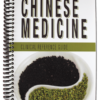



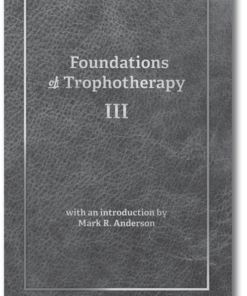
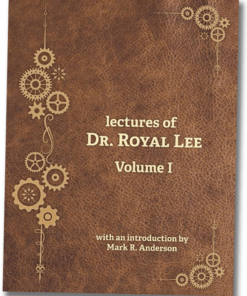
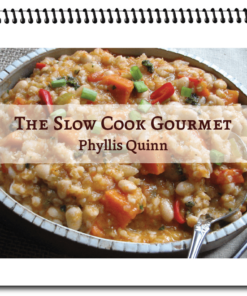
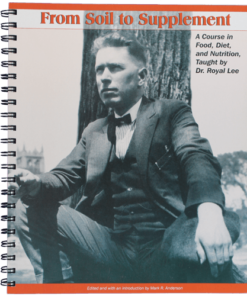

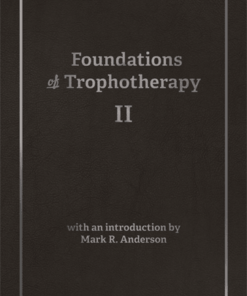

Reviews
There are no reviews yet.